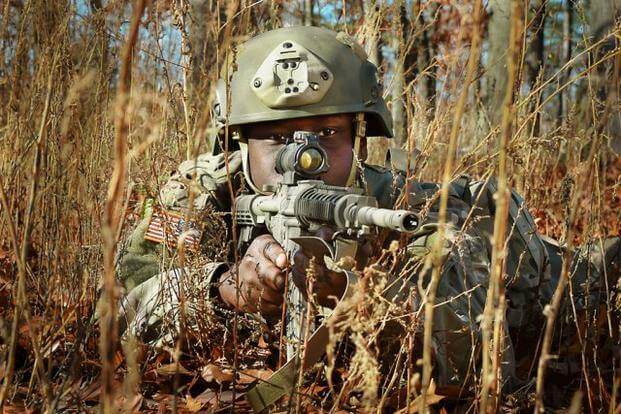U.S. Army researchers want to improve the service’s flame-resistant, protective apparel by developing a U.S.-manufactured, wool-blend uniform.
The Army has developed a wool-blend uniform composed of 50 percent wool, 42 percent Nomex, 5 percent Kevlar and 3 percent P140 antistatic fiber, according to a recent Army press release.
One goal of textile research and development effort is to create a flame-resistant combat uniform made solely from domestic materials, said Carole Winterhalter, a textile technologist with the Army Natick Soldier Research, Development and Engineering Center.
This research may provide an opportunity to meet this objective.
"We have a lightweight fabric that is inherently flame resistant; no topical treatments are added to provide FR," Winterhalter said. "We are introducing a very environmentally friendly and sustainable fiber to the combat uniform system. We don't have other wool-based fabrics in the system right now. This is a brand new material."
Three Army researchers traveled to Germany from Aug. 26 to Sept. 15 for Exercise Combined Resolve VII to work with about 100 soldiers in testing and evaluating prototype, wool-blend uniforms composed of this fabric. The scientists joined John Riedener, the field assistance in Science and Technology advisor assigned to 7th Army Training Command. The exercise brings about 3,500 participants from NATO allies to the region.
"We were in the heat of summer here, and it was very warm during the exercise,” Riedener said. “The uniforms were lighter weight and breathed better. Soldiers were very happy with the material.”
FAST advisors are a component of the U.S. Army Research, Development and Engineering Command.
Soldiers from 1st Armored Brigade Combat Team, 3rd Infantry Division participated in the 21-day testing and completed surveys before and after the exercise, said Brian Scott, NSRDEC equipment specialist, Soldier and Squad Optimization and Integration Team. The R&D team selected Hohenfels, Germany, because the previous FR wool undergarment evaluation took place there.
Each soldier received three wool-blend uniform prototypes. Each uniform was made from the same wool-based blend. One was "garment treated" with permethrin, an insecticide, and another "fabric treated" with permethrin. The third was untreated.
Soldiers wore each of the three uniforms for about seven days in a field environment for a total of 21 days. The testing and survey instructions asked soldiers not to compare the prototypes with existing uniforms or camouflage patterns. Participating soldiers came from multiple military occupational specialties.
Their feedback regarding comfort, durability, laundering and shrinkage, insect resistance, and overall performance will help determine whether researchers continue this development effort, Winterhalter said.
Initial results suggest the majority of the soldiers liked the fabric because it was lightweight and breathable; however, analysis of the survey data is not complete, said Shalli Sherman, NSRDEC program manager for the Office of Synchronization and Integration.
Winterhalter is optimistic about the prospect of a wool blend being incorporated into combat uniforms because of its environmental, manufacturing and economic benefits. She said the United States has about 80,000 wool growers, and the Army would like to include this material in the clothing system.
"Wool is 100 percent biodegradable. It's easy to dye and absorbs moisture," said Winterhalter, who is also the federal government's chief technology officer for the Advanced Functional Fabrics of America Manufacturing Innovation Institute.
The Army has spent quite a bit of time and money to reintroduce a manufacturing process in this country called Super Wash that allows us to shrink-resist treat the wool, Winterhalter said.
"When blended with other fibers, the fabric does not shrink excessively when washed,” Winterhalter said. “The Super Wash line at Chargeurs in Jamestown, South Carolina, has exceeded its business estimates. It has revitalized wool manufacturing in this country.”
The new Super Wash process makes wool viable for combat clothing in nearly any application, including jackets, pants, underwear, headwear, gloves and socks, Winterhalter said.
NSRDEC researchers plan a larger field study with more users over a longer time period of possibly 30 days. More data on comfort and durability is needed as the Army moves forward with this R&D effort, Winterhalter said.










